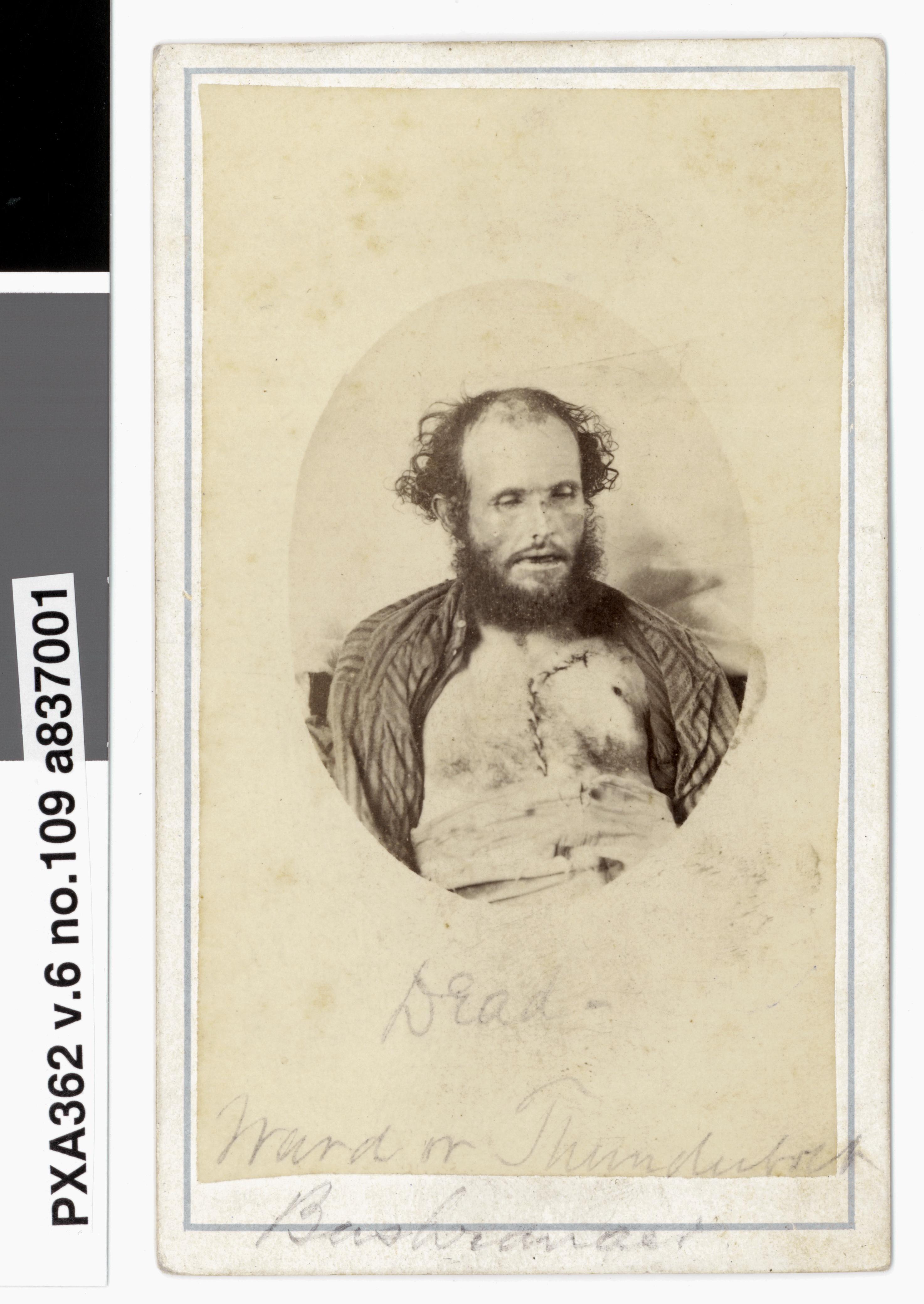Captain Thunderbolt
By God, I thought it must have been a thunderbolt.
Hundreds flocked to see the body of Captain Thunderbolt (1835-1870) after his death and for a shilling, you could buy a postcard of his bullet-ridden body.
It was an ignominious end to the last of the professional bushrangers in New South Wales. Frederick Ward (his real name) had become something of a folk hero due to his gentlemanly behaviour and his tendency to avoid violence.
Horsebreaker and thief
As a young man, Ward became an expert horseman while working as a horsebreaker and drover on the Tocal Run on the lower Paterson River. This, and his strong self-reliance and physical endurance meant that he could survive in the bush for long stretches of time.
His first brush with the law came with his arrest in April 1856 for attempting to drove forty-five stolen horses to the Windsor sale yards. Found guilty, he spent four years imprisoned at Cockatoo Island, Sydney Harbour before being released on a ticket of leave (parole).
In 1860, he met Mary Ann Bugg. When she became pregnant with his child, Ward settled her in the Dungog area. He soon was in trouble with the authorities again and arrested for breaking the terms of his parole and for horse stealing. Ward was sent back to Cockatoo Island.
Escape
Yearning for freedom, Ward fled Cockatoo Island with another prisoner, Fred Britten, on 11 September 1863 by swimming to shore and then heading north out of Sydney. Travelling toward New England and then Maitland, Ward went on a robbing spree. Enduring bushranger mythology claims the name Captain Thunderbolt was established when Ward entered the tollbar house on the road between Rutherford and Maitland and startled the customs officer from his sleep by banging loudly on the door. The startled officer, Delaney, is purported to remark, 'By God, I thought it must have been a thunderbolt'.
Roaming across a vast area of New South Wales, from the Hunter Valley to the Queensland border, Ward sometimes included Mary Ann and their children in his crimes. A spree in Dungog, Stroud and Singleton from November 1863 to January 1864 involved the entire bushranging family.
"Whilst my horse was under the man made a rush at me with revolver in hand. As soon as I saw that I fired at him. He went under the water." - Constable Walker, 1870
Cornered
Police and volunteers chased them through the rugged hill country near Dungog, but Ward, Mary Ann and the children escaped. Ward fled from his pursuers on horseback by leaping down a cliff face above the Allyn River. Fortunately for both rider and horse, they landed in a sand bed.
Frederick “Captain Thunderbolt” Ward was eventually shot by Constable Walker (an off-duty policeman) in 1870 after a dramatic showdown when Walker shot Thunderbolt’s horse out from under him in swamp land near Uralla.

